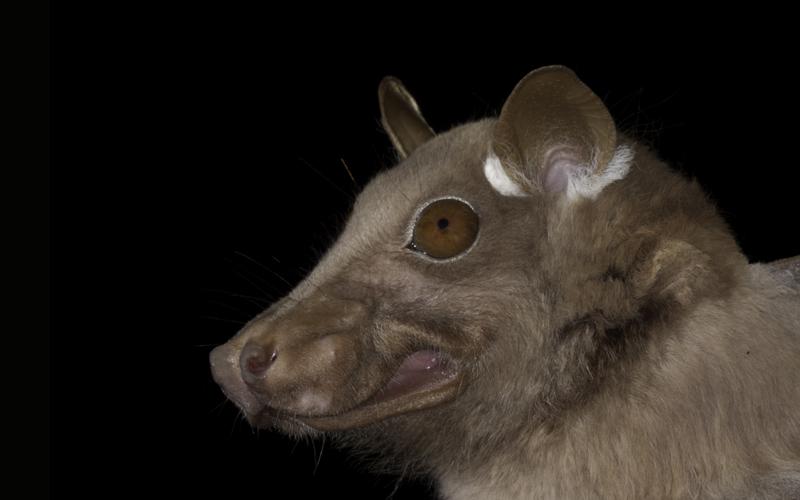Emily Norma Kudze
The aim is to develop a catalogue, distribution map and identification key of Chiroptera in Ghana, as well as a conservation plan for bats of Ghana.

Epomophorus gambianus crypturus. ©E.C.J Seamark (AfricanBats NPC).
Bats are the second most species rich mammalian order in tropical regions. In addition, bats help in reforestation through pollination and assist in the control of insect infestation on agricultural lands Studies have been conducted in Ghana concerning bats, most specimens collected during these exhibitions are spread all over West Africa, Europe and north America. To collectively get information about the distribution and status of the different bats occurring Ghana is difficult. There is no one stop to get a database that has all the information of specimens of bats occurring in Ghana and their location. According to Grubb et al (1998), there are 33 species of bats; the number of specimens is unknown, spread over 3 different universities in Ghana: The University of Ghana (UG), The University of Cape Coast (UCC) and Kwame Nkrumah University of Science and Technology (UST). Identifying and centralising which bat species are in Ghana will expand our knowledge on their distribution and ecology.
My project will entail collecting and synthesising museum databases for bat specimens that were collected in Ghana. Using the collected data, a distribution map will be formulated using ArcGIS (version 10.2.2), furthermore following the methodology of Brown (2014), species distribution models (SDMs) will be used to calculate the species richness, the weighted endemism and corrected weighted endemism. This will predict where bat species in Ghana will likely occur based on a variety of climatic and environmental variables which best describe the niche distribution model. This will assist in the formulation of a bat conservation plan for Ghana. This project is important as majority of forests in Ghana’s tropical region have been lost due to agricultural and mining practices.
The development of a bat conservation plan for Ghana will assist in the selection of new protected areas, regeneration and restoration of forests.